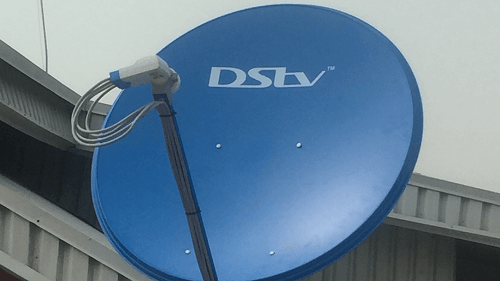Business
Multichoice’s DStv Exit Plan Backfires as Showmax Revenue Falls

Multichoice’s Streaming Gamble Backfires: Showmax Revenue Plunges, DStv Losses Mount
Multichoice bet the future of its business on Showmax replacing its dying DStv satellite revenue, but the numbers show the plan is going off the rails.
At first, it looked like a bold, future-facing strategy. DStv subscriptions were bleeding, cord-cutting was accelerating, and consumer habits were shifting toward streaming. So Multichoice pivoted. Hard.
The company poured billions into relaunching Showmax in partnership with global media giant NBCUniversal, promising a sleek new platform powered by Peacock’s tech and loaded with local content. The mission: transform Showmax into Africa’s streaming powerhouse and plug the growing revenue gap from DStv’s decline.
But instead of futureproofing the company, the move has backfired. Spectacularly.
From Bold Forecasts to Bleak Reality
In May 2023, Multichoice executives painted a rosy picture. Former Showmax CEO Yolisa Phahle confidently declared the platform would generate R18 billion in revenue within five years, riding the wave of Africa’s “untapped” streaming potential. Multichoice CEO Calvo Mawela echoed that optimism, justifying massive investments with a firm belief that streaming was the future of African entertainment.
Fast forward to 2025, and that vision is unraveling.
Despite a 44% growth in active paying subscribers, Showmax revenue dropped to R800 million, down from R1 billion in 2024 — and even below its 2023 revenue of R855 million.
To hit that R18 billion target by 2028, Showmax would need to grow 185% per year, which is virtually impossible given it’s shrinking, not growing.
Losses Mount as Investments Balloon
Multichoice has poured in cash and the losses have poured out.
-
Since 2023, over R3.9 billion has been invested into Showmax.
-
In the last financial year alone, R2.4 billion was spent.
-
Trading losses have ballooned from R1.2 billion in 2023 to R4.9 billion in 2025.
The platform is now 23 times smaller than it needs to be to meet targets. In short, it’s not just missing the mark it’s sliding backwards while burning investor money.
The DStv Elephant in the Room
This is all happening against the backdrop of DStv’s ongoing subscriber decline. As the traditional satellite business continues to lose market share, especially among mid- to high-income households — the urgency for a digital replacement becomes more acute.
Showmax was supposed to be the plug for the leak. Instead, it’s becoming the hole in the ship.
What Went Wrong?
So why is Showmax falling short?
-
Tough competition: Global players like Netflix, Amazon Prime Video, and Disney+ have been muscling into the African market. Many offer superior tech, larger content libraries, and bundles that integrate seamlessly with devices.
-
Market misread: While Africa is often called the “final frontier” for streaming growth, the assumption that millions would instantly switch to SVOD services underestimated data costs, tech accessibility, and economic strain on consumers.
-
Execution struggles: Showmax 2.0 was supposed to be slicker and more reliable. But user feedback across social media suggests the platform still battles glitches, login errors, and billing hiccups — problems it can’t afford when going up against well-oiled global giants.
A Streaming Strategy in Crisis
There’s no doubt that streaming is growing in Africa, but Multichoice may have overestimated how fast and how far. And as traditional DStv revenue shrinks faster than Showmax can grow, the company faces a daunting reality: it has no safety net.
The failure to generate significant Showmax revenue in 2025, even after a high-profile relaunch and 44% user growth — suggests deeper systemic issues.
The real risk now? That Multichoice’s digital pivot is not just slow, it’s fundamentally flawed.
Multichoice will likely have to reassess its digital strategy, rein in spending, and perhaps look to other monetisation models, including:
-
Advertising-based streaming tiers (AVOD)
-
Integration with telecom partners
-
Licensing content to rival platforms
It may also need to be honest with investors: Showmax may never be the DStv replacement it promised to be.
As it stands, the platform’s performance is less a comeback story and more a cautionary tale about overconfidence in digital disruption without local economic alignment.
Multichoice built the future of its business on Showmax. But the numbers don’t lie, that future is faltering fast.
MultiChoice’s Side Hustles Shine as DStv Cracks Under Pressure
{Source: BusinessTech}
Follow Joburg ETC on Facebook, Twitter , TikTok and Instagram
For more News in Johannesburg, visit joburgetc.com



























